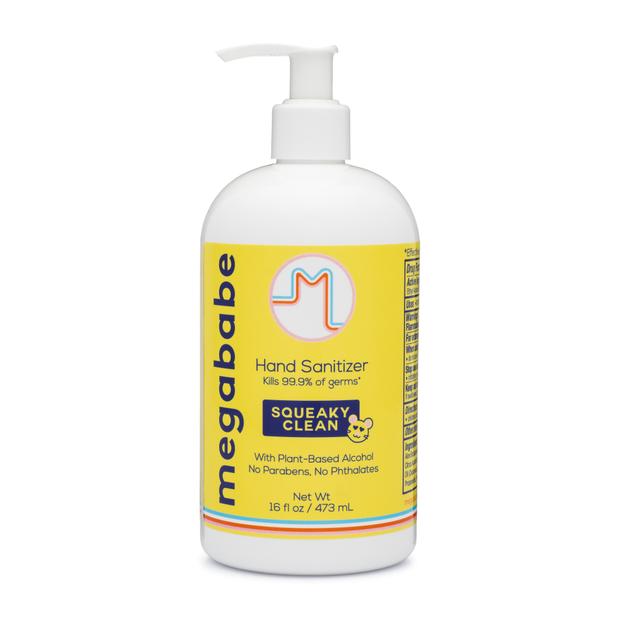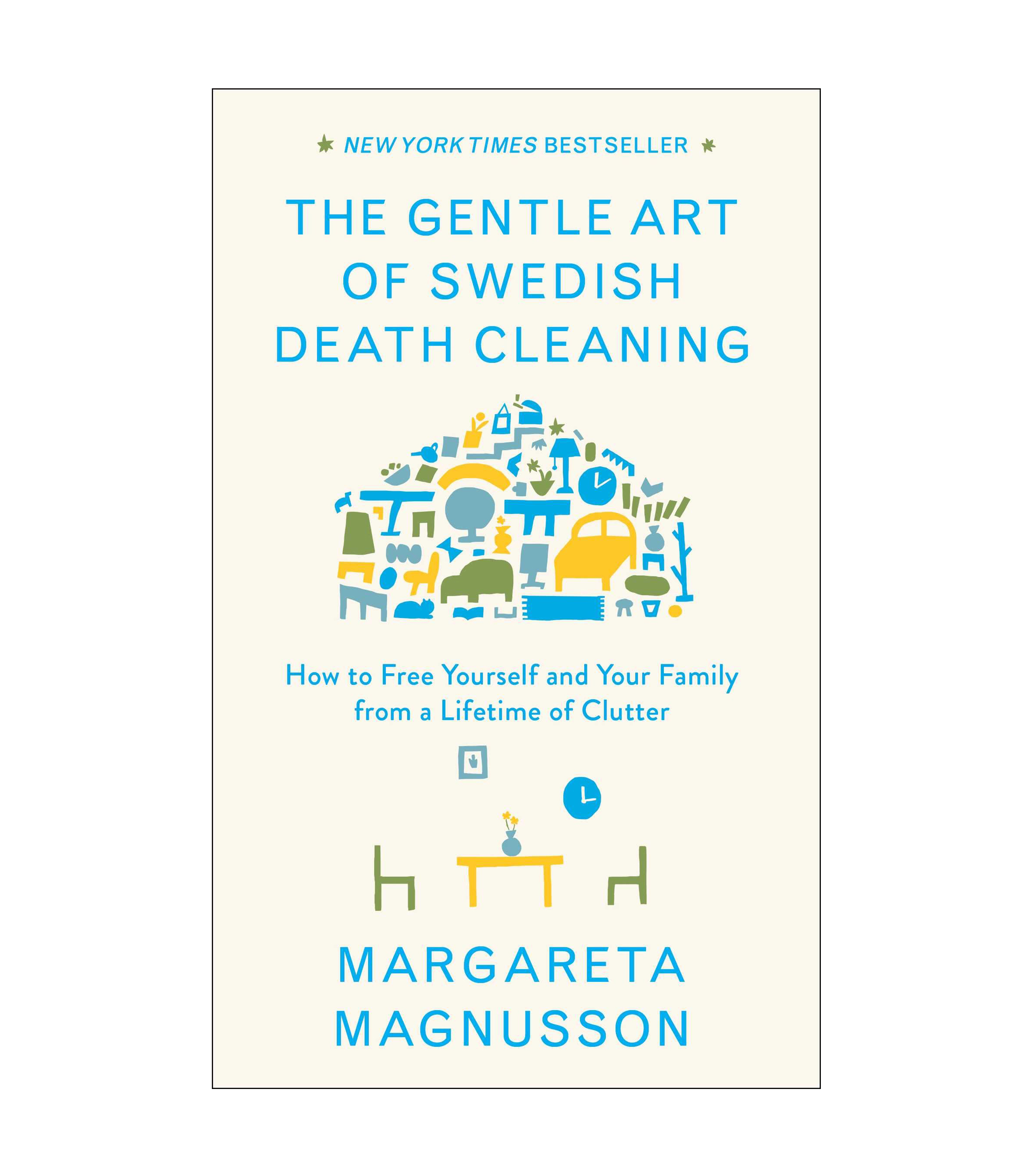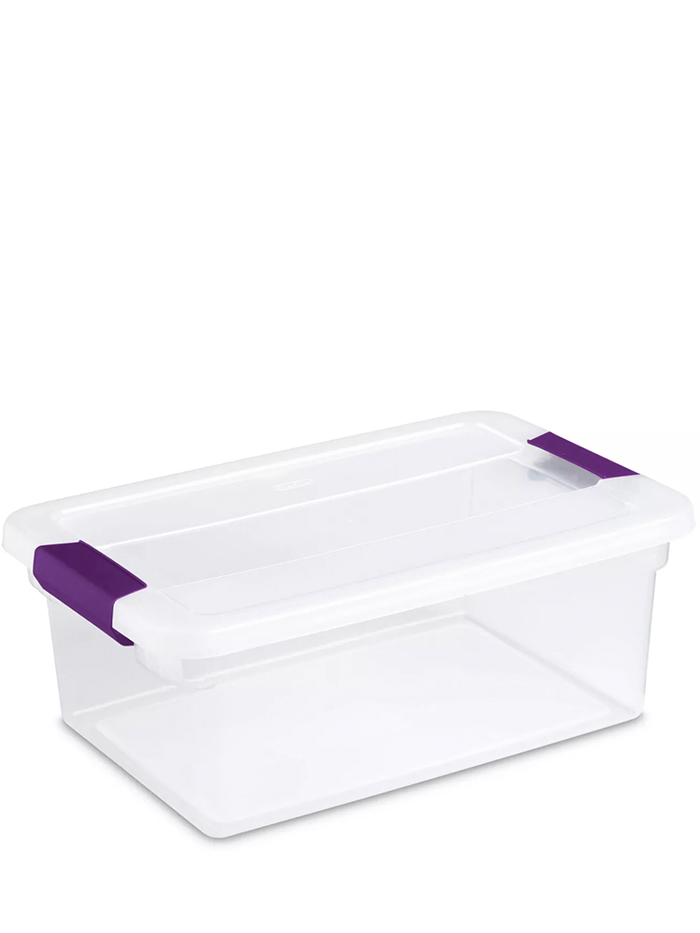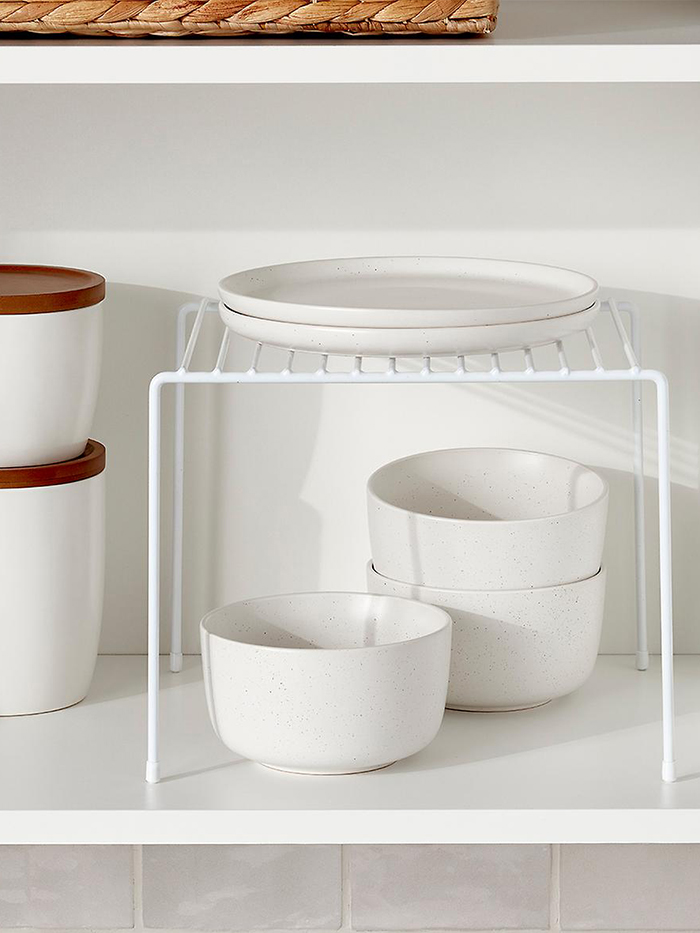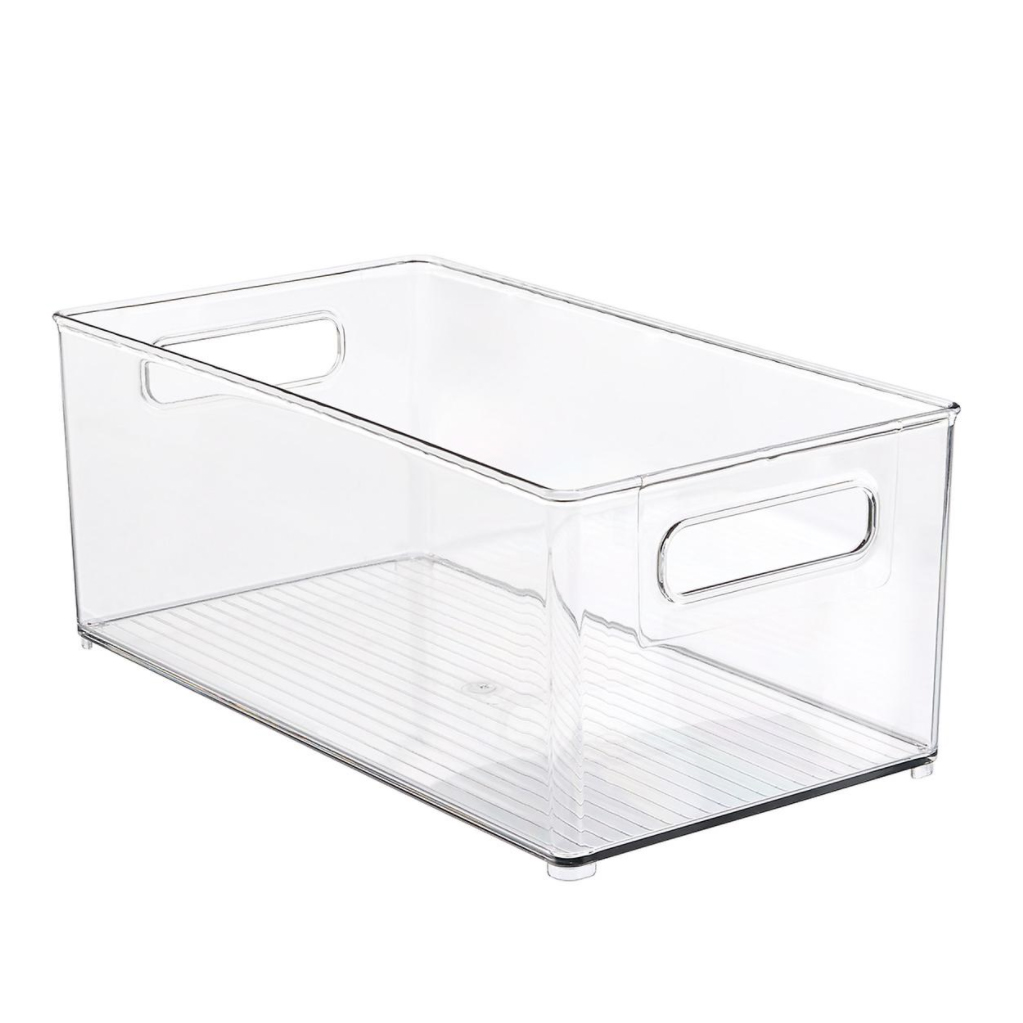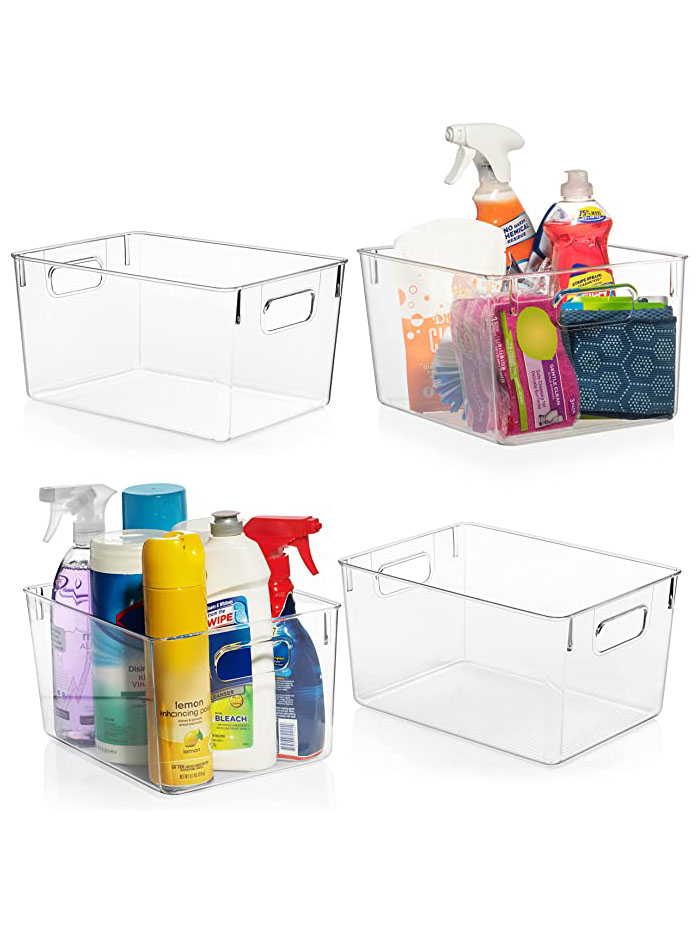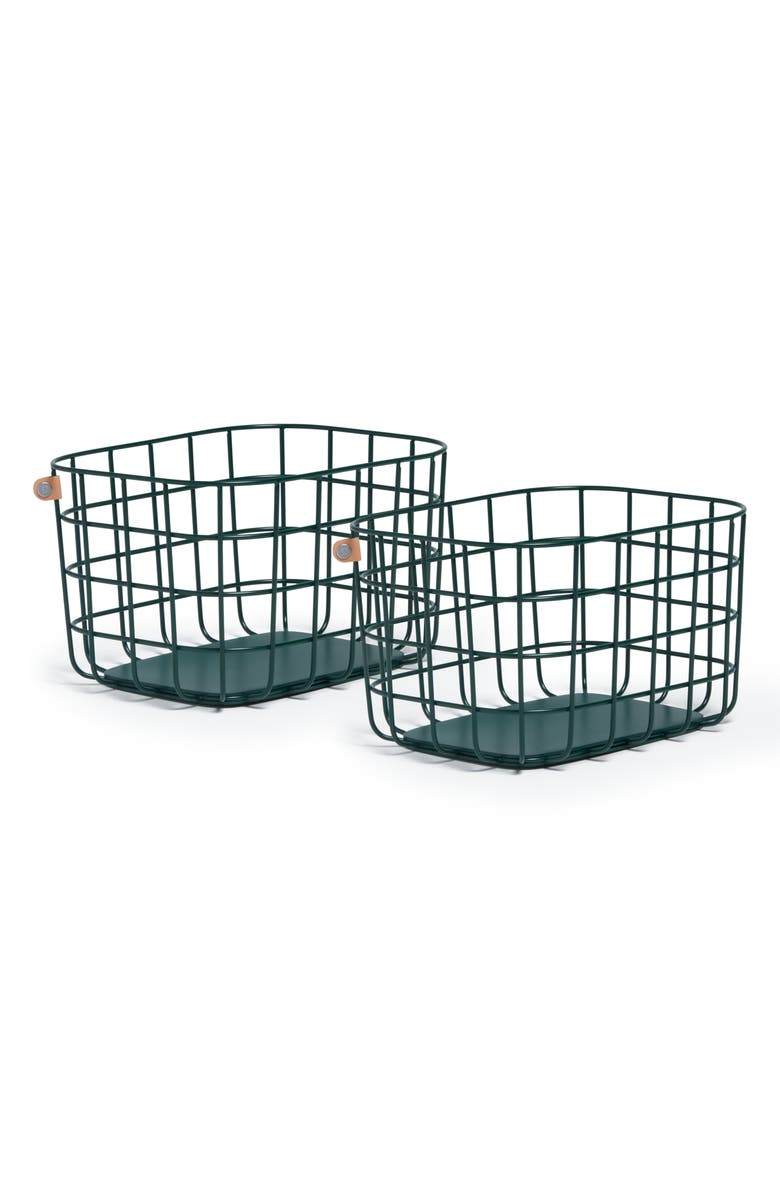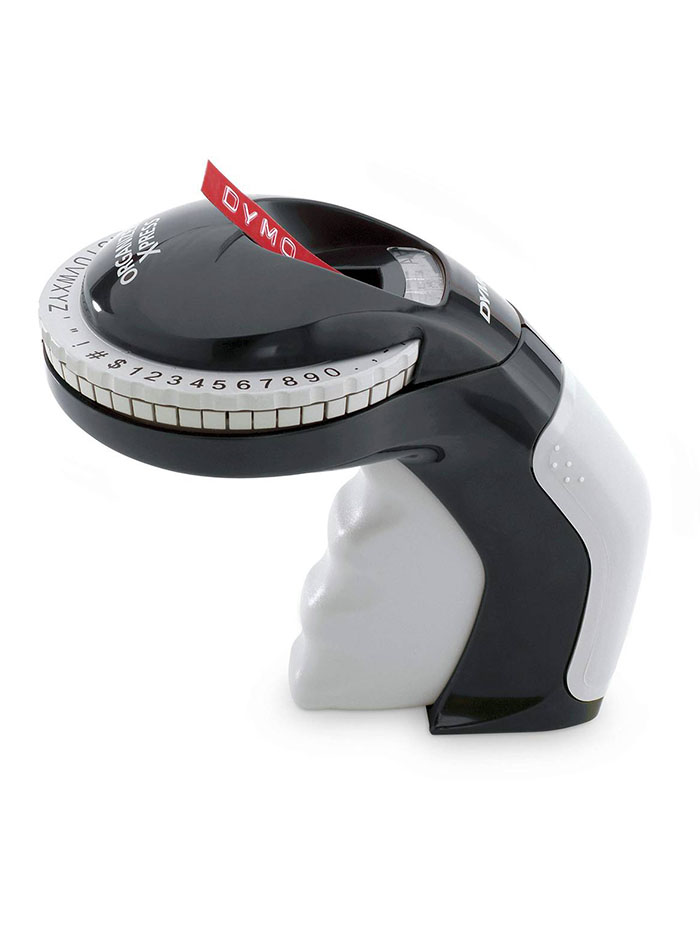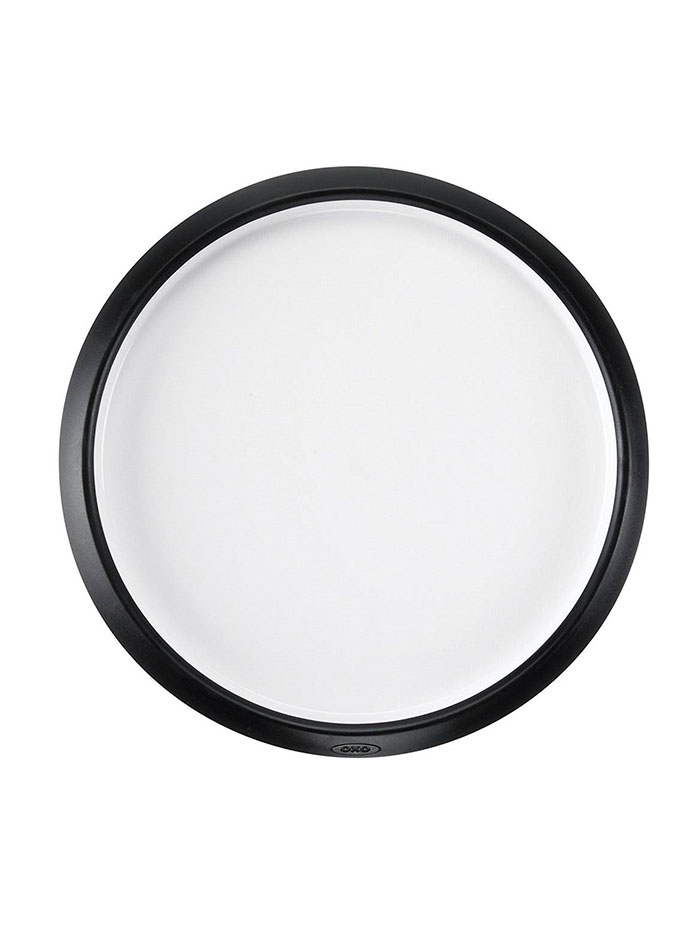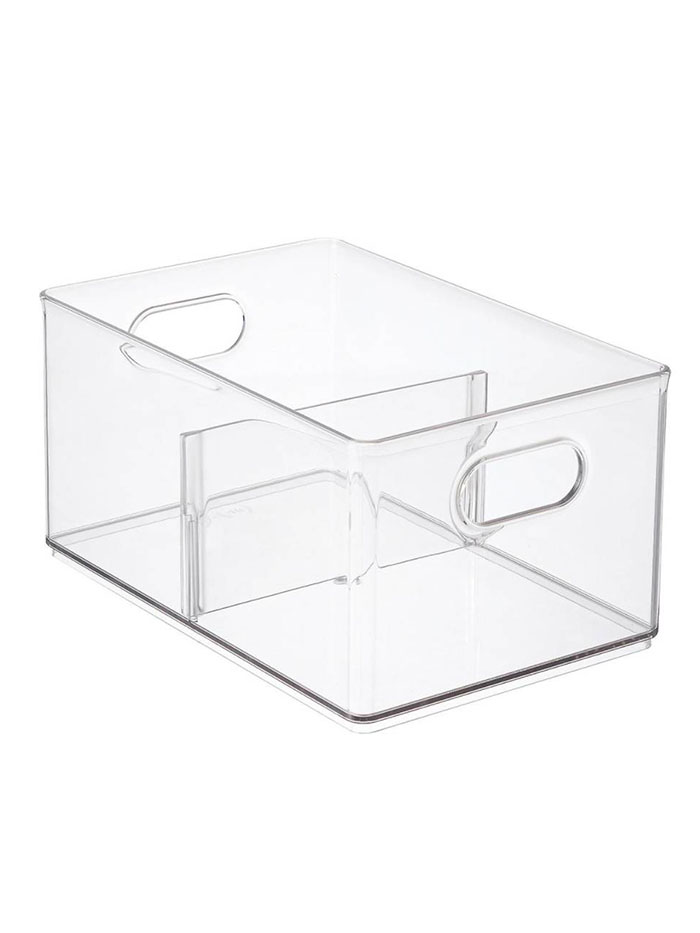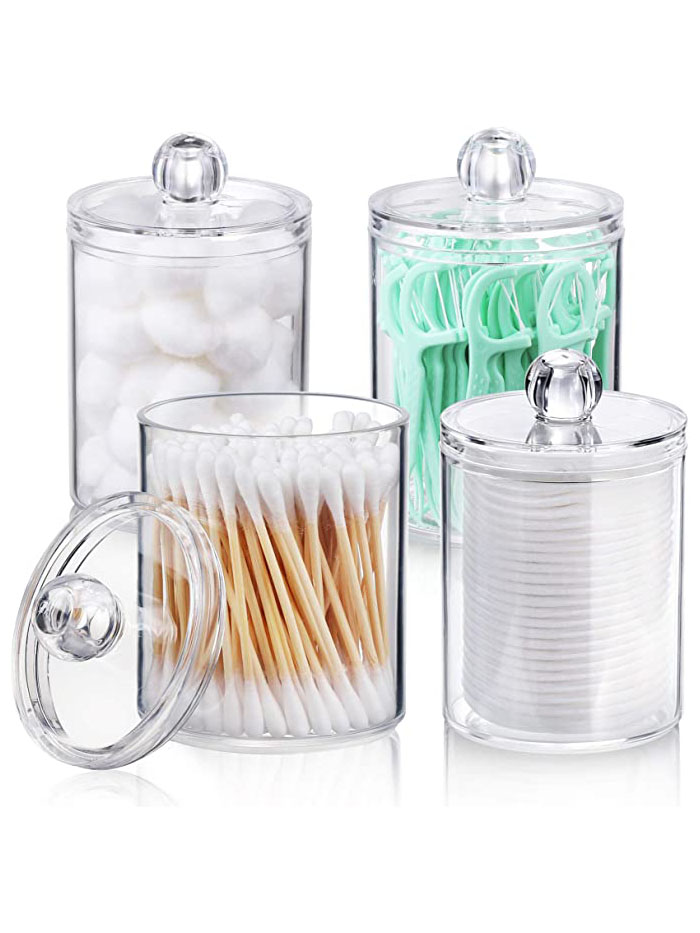I Tried 5 Organization Methods—This One Was By Far the Best
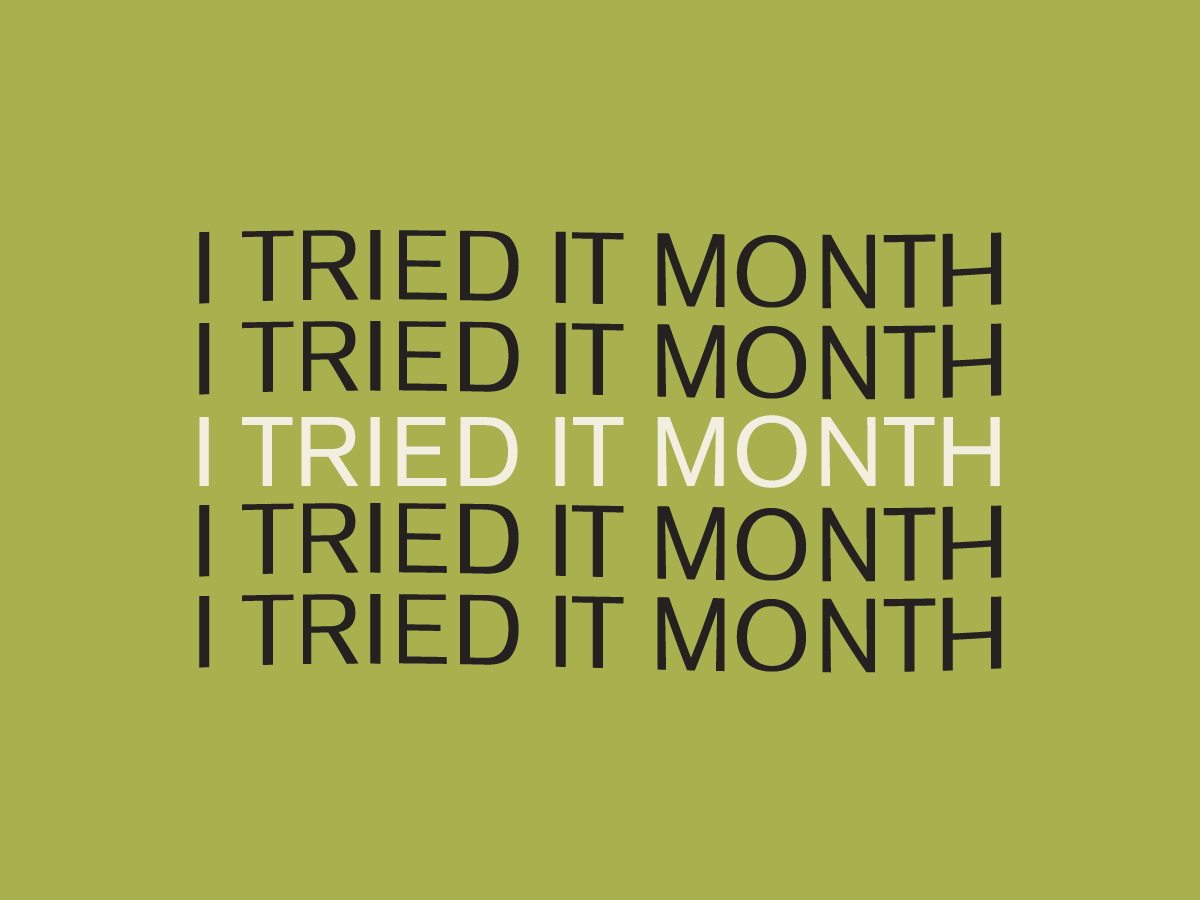
Welcome to I Tried It Month, where we'll be publishing a new fashion, beauty, or wellness article every day in January that features a first-person account of shaking up an old habit, pushing beyond a comfort zone, or simply trying something new. Follow along for 31 days of storytelling, including everything from going without a cellphone for 40 days to trying the polarizing low-rise-pants trend.
Keeping an organized home has never been at the top of my to-do list. Clean, yes, but organized… not so much. My fiancé and I live in a small bungalow (like 800-square-feet small) that has minimal storage, so several areas of our home serve multiple purposes. I spend a majority of the workweek glued to my computer, and once the weekend rolls around, I'm either using that time to clean up the mess that's accumulated throughout the week, or I'm so mentally exhausted that I mindlessly stream an entire Netflix series in one sitting. There's really no in-between.
This year, I made it a goal to figure out how I can best organize our space so that it's efficient and, most importantly, easy to maintain. I did a ton of research and reached out to an expert to find the best ways to organize your home, and one method won by a landslide. Read on to find out what methods I tried in every room of my home along with my honest review of each. If you're interested in seeing what other challenges my colleagues took on for the I Tried It series, please subscribe to our newsletter.
#5: One-Touch Rule
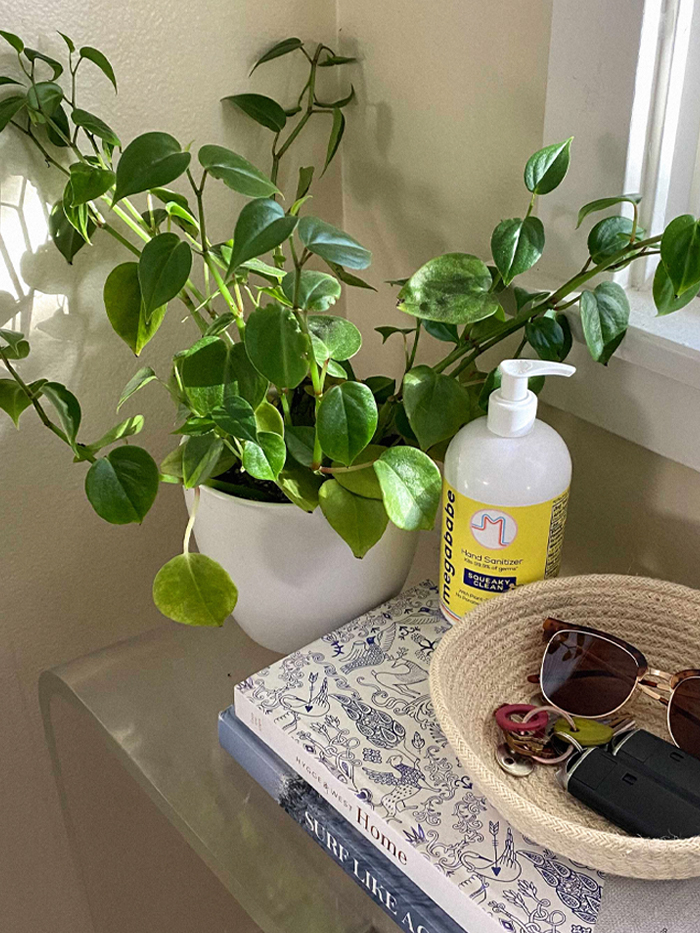
The One-Touch Rule is an organizing trend I heard about a few years ago, so I finally decided to test it out. The method was created by productivity expert Ann Gomez and is incredibly simple: place items immediately in one spot and refrain from allowing for multiple touch points. I decided to test this theory out in my living room, the space I come into contact with when I first enter the home. This tactic is great if you have designated homes for every item (e.g., a mudroom, wall hooks, or a hallway closet), which we didn't have, so we needed to add a few organizational touch points to our living room to accommodate. I added a catchall bowl for keys, hand sanitizer, and sunglasses and a wall hook for face masks and found this to be a really simple way to reduce clutter. I liked this method for smaller-item clutter and will continue to integrate it throughout our home.
#4: Swedish Death Cleaning
This decluttering method was coined by Margareta Magnusson in her book The Gentle Art of Swedish Death Cleaning. As morbid as it sounds, the idea behind Swedish Death Cleaning is simply a way to declutter so that, in the chance you perish, you don't leave an abundance of useless clutter for your family to deal with. As depressing as this one is, it actually forced us to clean out and donate the stuff that really didn't mean anything to us—which was a lot. Paring down our items to the stuff we actually use on the daily and those mementos that mean a lot to us helped free up a ton of space.
#3: KonMari
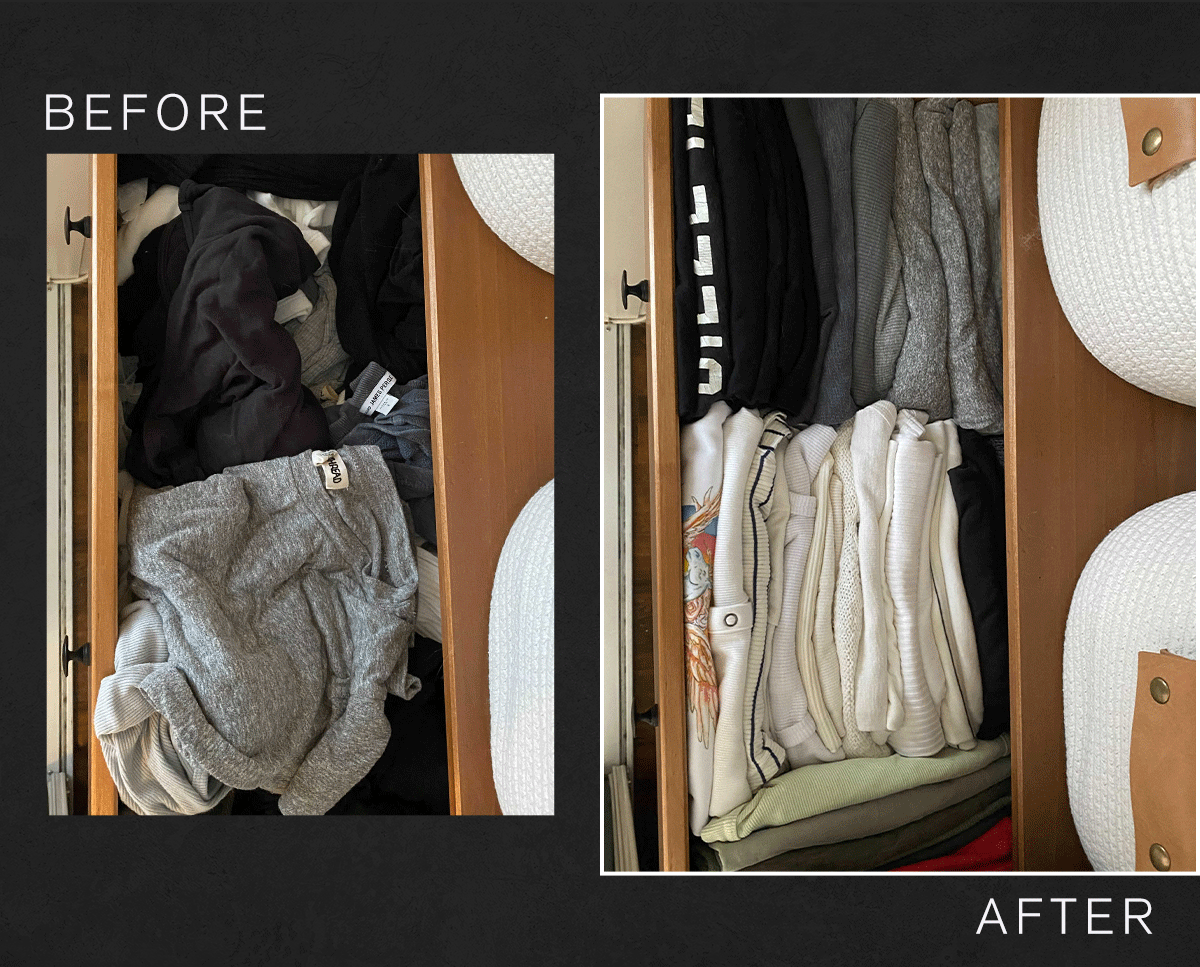
This is probably the most famous method of them all, and it definitely doesn't disappoint. In case you're not familiar with Marie Kondo's organization process, the KonMari method is about going through categories in a specific order—clothes, books, paper, miscellaneous items, and sentimental items—clarifying what sparks joy and, for those items that don’t, releasing them with gratitude. I used this method to go through the items in the suggested order, with clothes being first. I'm not sure if it's the 10 months of quarantine living in sweats, but it was surprisingly easy to let go of several bags of clothing that no longer sparked joy. I was able to significantly reduce my wardrobe and then (amateurishly) file-fold them back in my tiny dresser. I'd highly recommend this method for a non-overwhelming approach to decluttering.
#2: Lookscope App
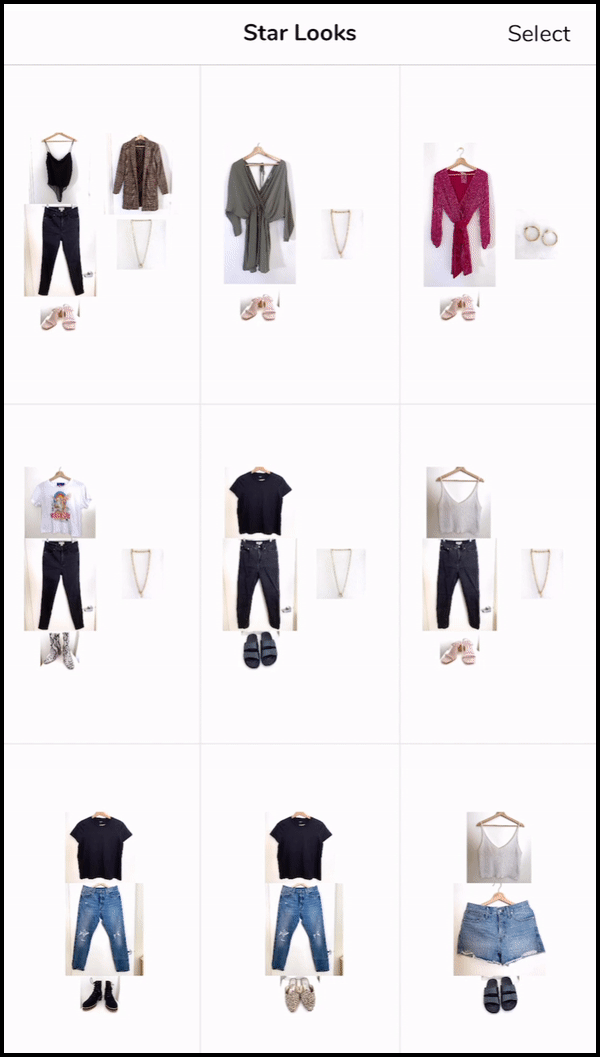
Sometimes, organization is as simple as downloading an app on your phone. This method is great for those of us who inevitably end up with some sort of manifestation of "the chair." I think you know what I'm referring to—the one spot, usually a chair, where clothes end up either after laundry or before they get to the closet. My "chair" is my guest bed, usually hit by a fresh load of laundry or my rejected clothes after I've tried on a couple of outfit options for work or going out. For the rejected-clothes issue, I downloaded a free app called Lookscope, which is a virtual closet where you take photos of everything you own, and it uses its algorithm to virtually shuffle outfit ideas so you don't have to physically go through your closet. It's also an awesome way to see how pieces that you might not have thought about pairing work together. "The chair" is now a thing of the past. Pro tip: This one was really fun to do in tandem with the KonMari method since you're already taking everything out—might as well snap a picture before you file-fold or hang it back up!
#1: Leave It to the Professionals
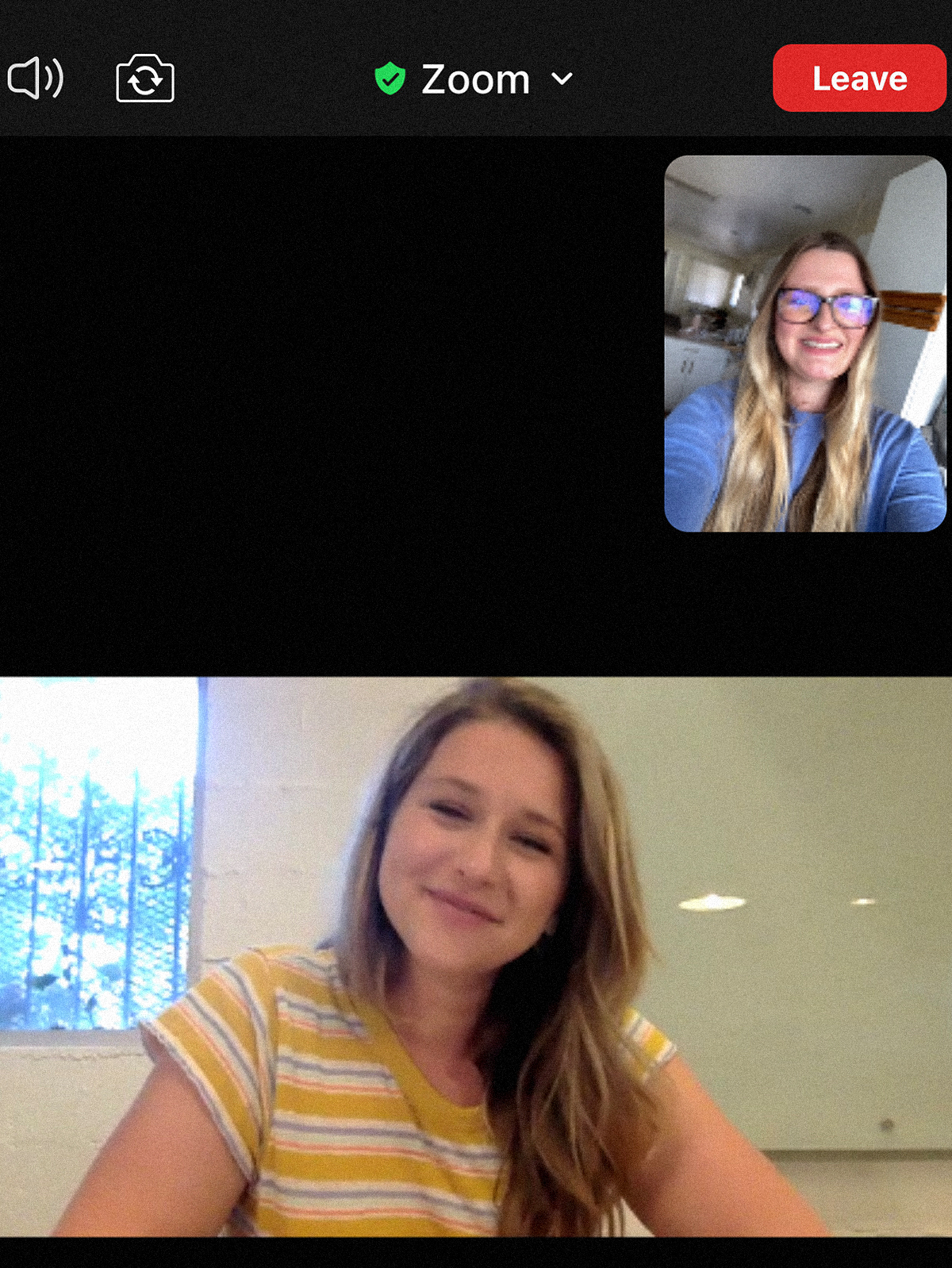
When it comes to efficiency and decluttering, it is, quite literally, best to leave it to the pros. This was, by far, the best solution for our overall home organization. I was lucky enough to get a virtual appointment with Julianna Strickland of Space Camp, where she went through my most-used space (the kitchen) and reimagined it so that every item had a designated home and purpose. Having an expert go through and list out exactly what needs to be changed and removed and explain how to utilize your space is the best way to get the most out of your home. She helped me eliminate the items I no longer needed and figured out an organizational system that made sense for my lifestyle so that, once everything had a home, maintaining it would be second nature. What I loved most about working with her is that she mapped out a layout that was easy to implement and provided cost-efficient upgrades, like super-affordable custom shelves that I wouldn't have been able to find on my own. I would 10/10 work with her again on other rooms in my home and would recommend going the professional route if you can. I'll let the before-and-after photos speak for themselves:
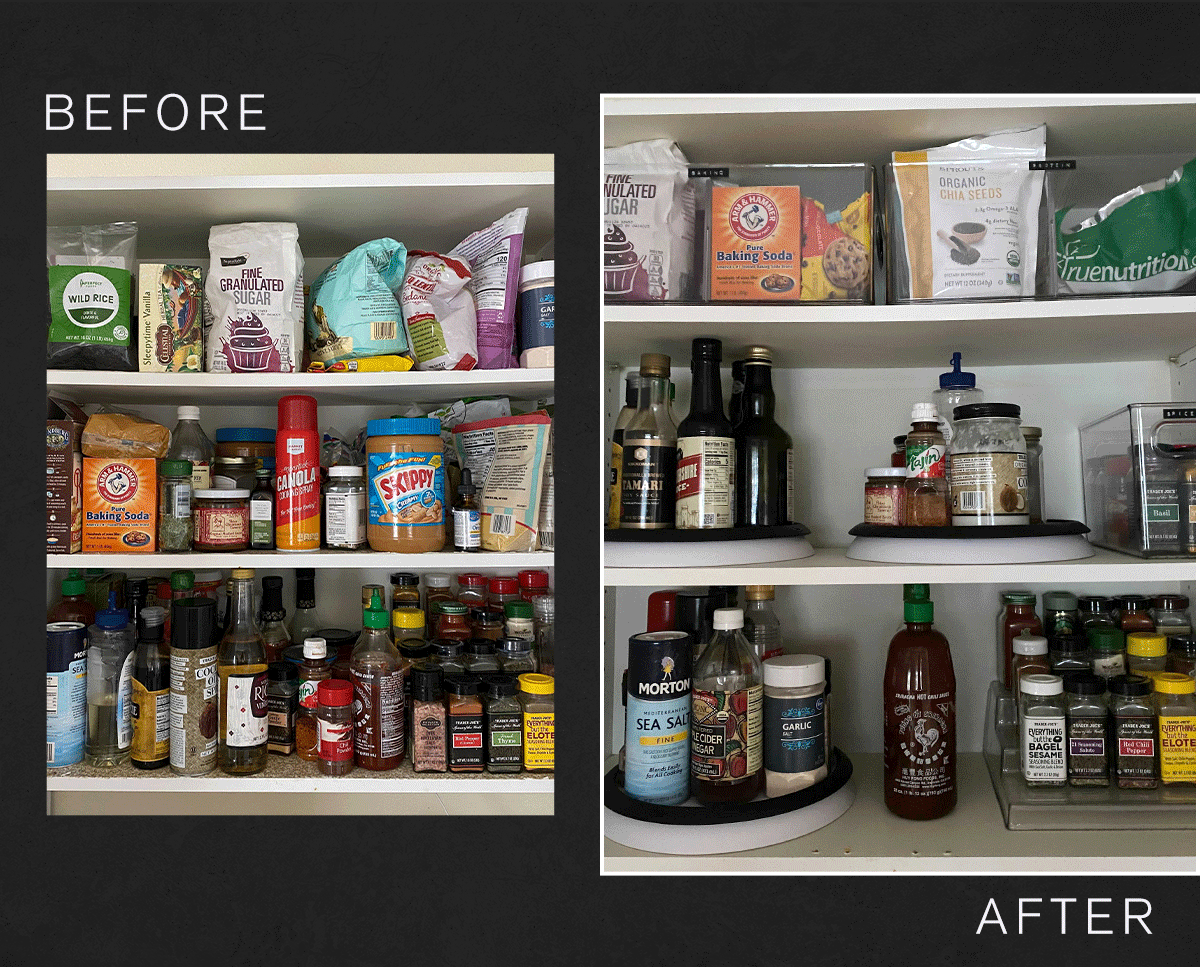
The spices and baking cabinet was my first project. My task: take everything out and sort into categories. Julianna suggested I use simple tools like these OXO Turntables and clear bins to organize and store my spices.
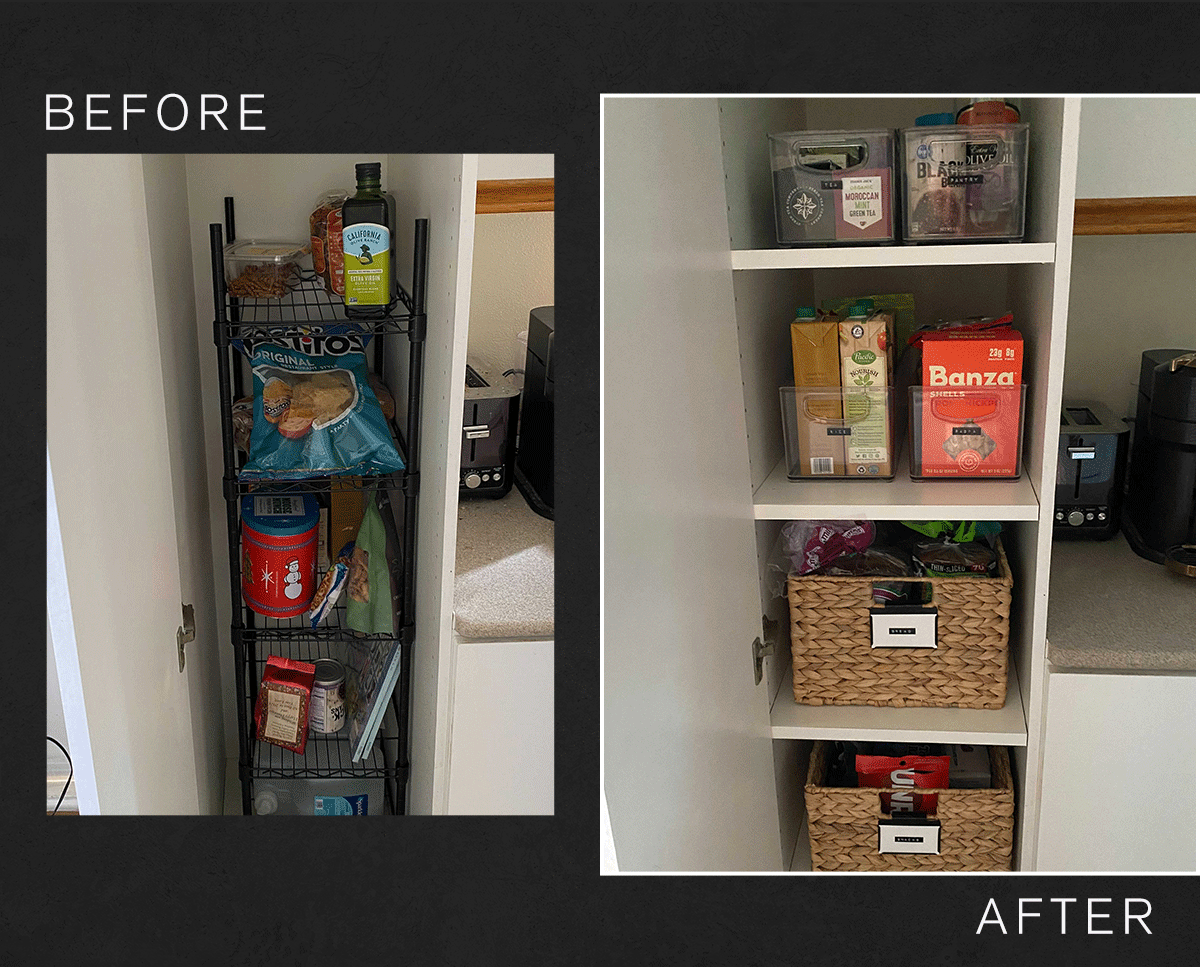
My kitchen never had a traditional pantry, so I was using this storage closet with a wire shelf I found on Amazon to MacGyver one. Julianna immediately noted the wasted space from the incorrectly sized unit and custom-ordered proper melamine shelves that I installed (which ended up being cheaper than the wire shelving unit). Add some water hyacinth and plastic bins and voilà!
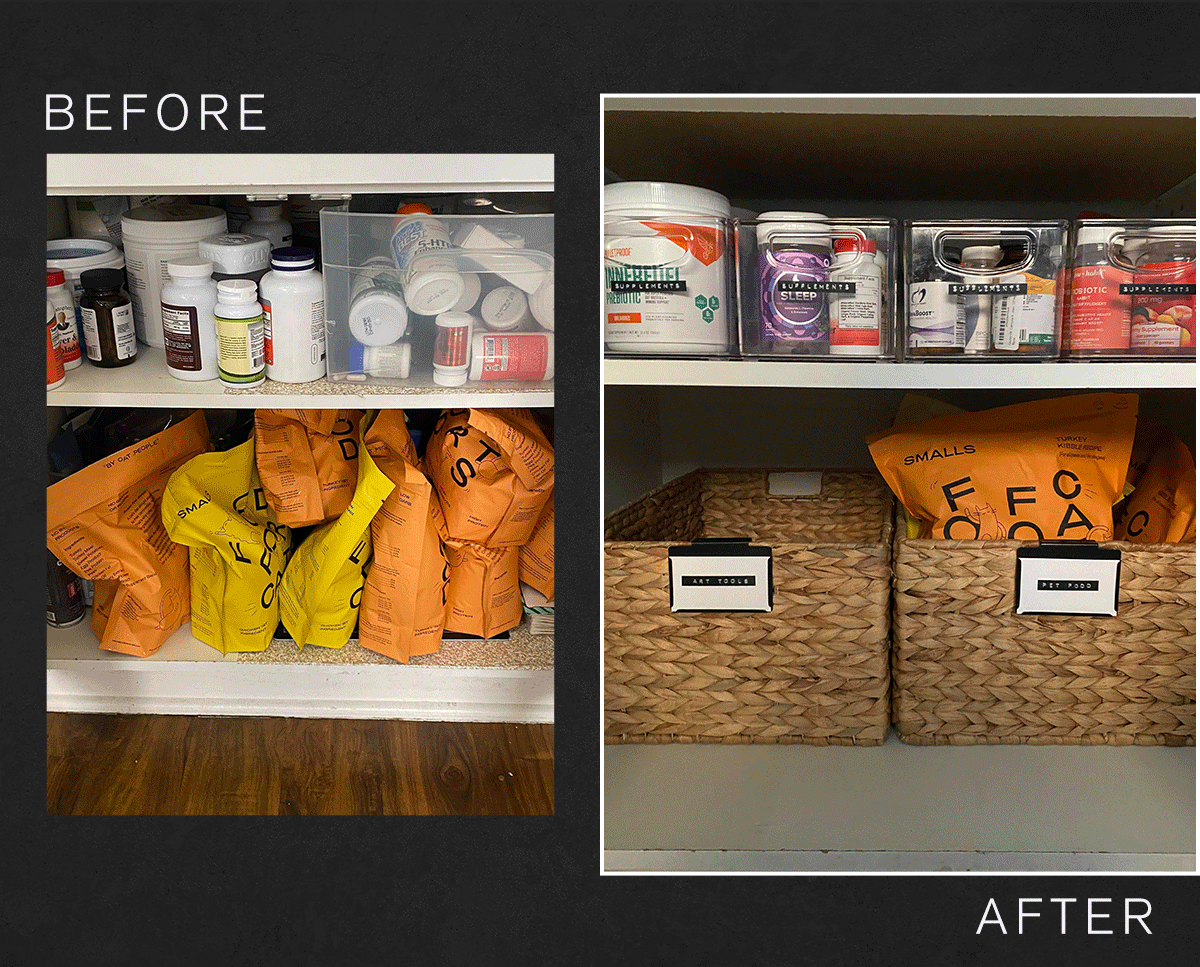
This cabinet was stuffed to the brim with supplements and a surplus of pet food. Julianna suggested I use a few more of the plastic and water hyacinth bins to make this space organized and functional.
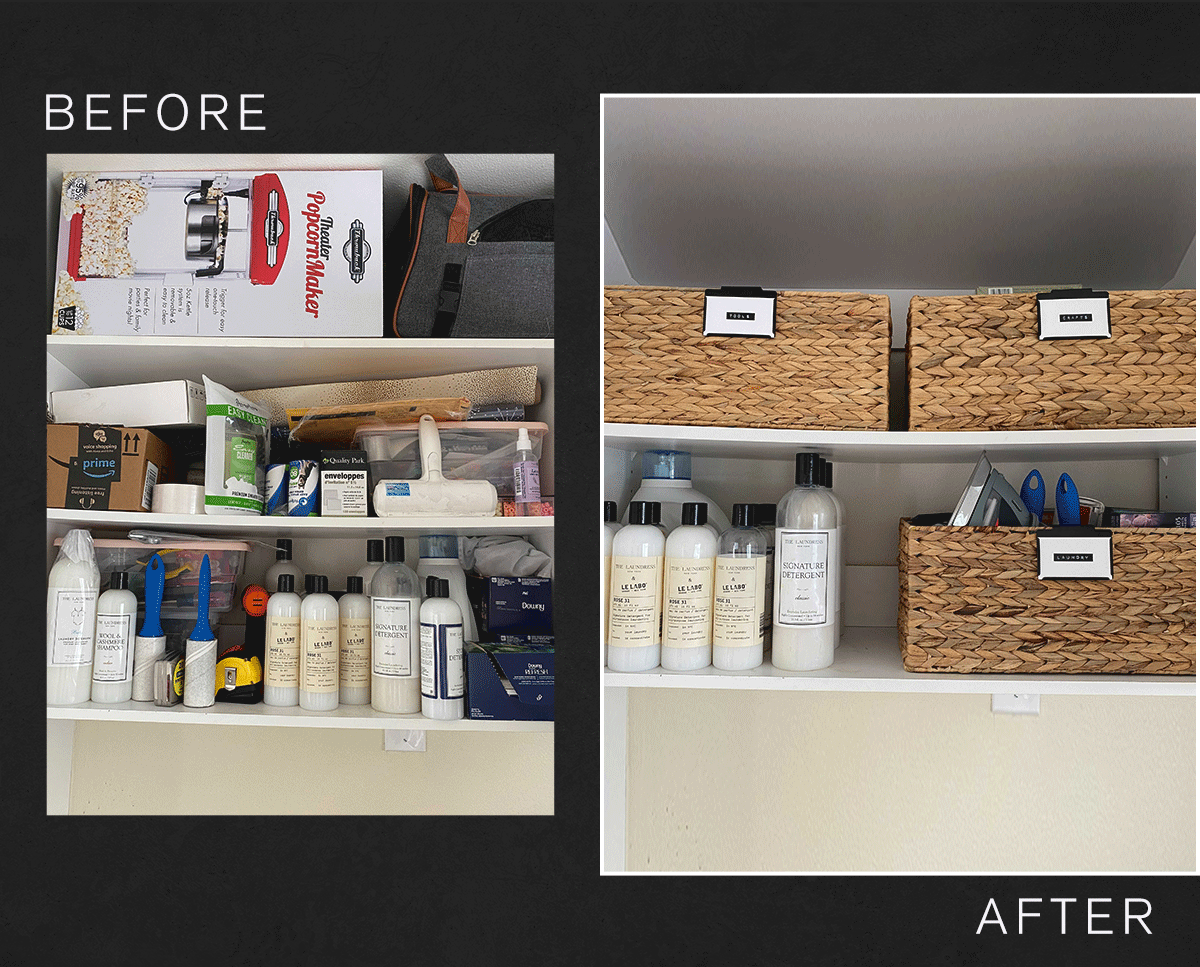
This is one of my favorite before-and-after shots. My laundry cabinet was an absolute mess filled with tools, crafts, and laundry care items. After getting rid of a lot of unnecessary junk, we put everything back into these category-specific water hyacinth bins.
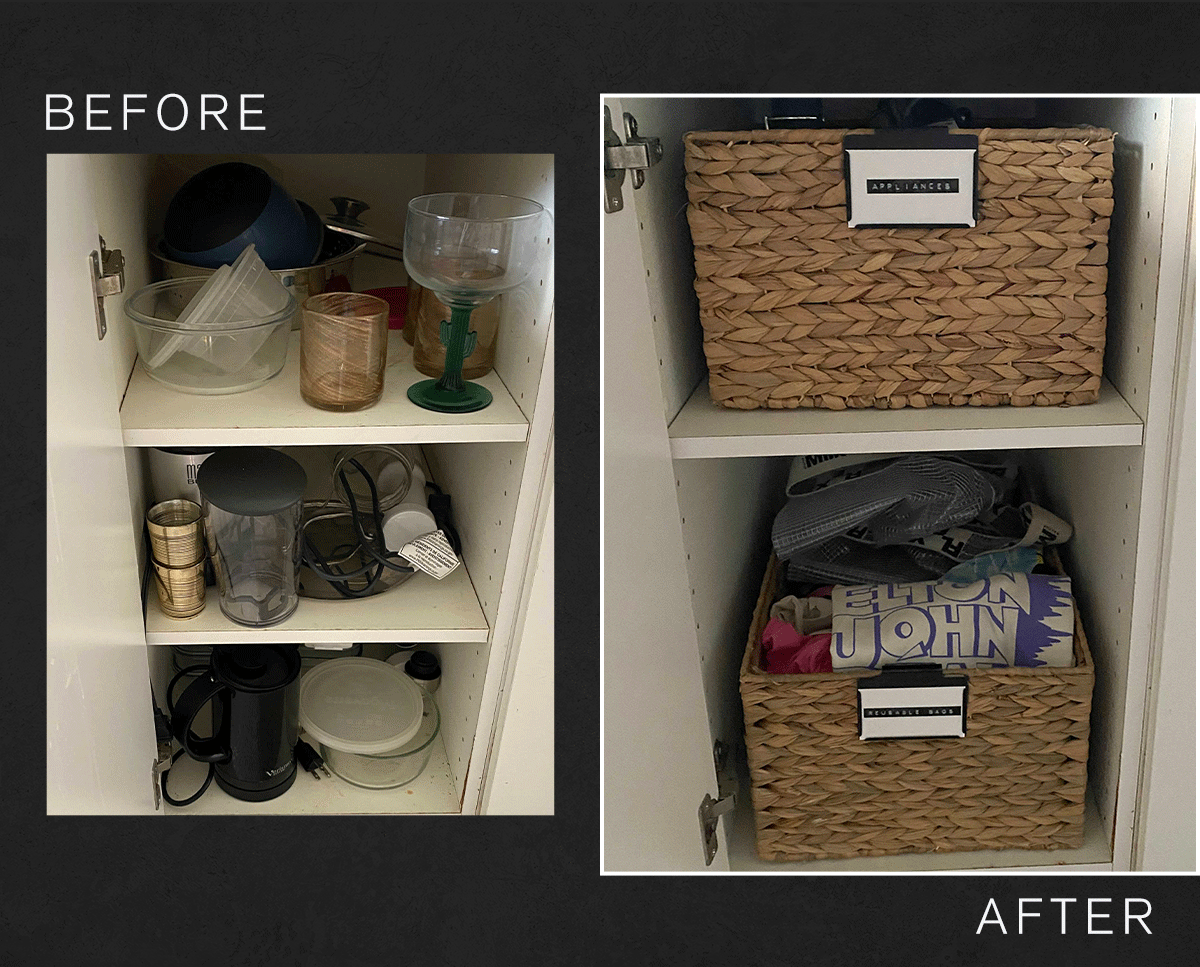
Here's another space that was filled with random appliances and glassware. I went through this cabinet and put any random glassware in its designated glassware cabinet and organized any appliances together in a neat bin. I also used this area to store our reusable bags, which were shoved into a void that was the cabinet below.
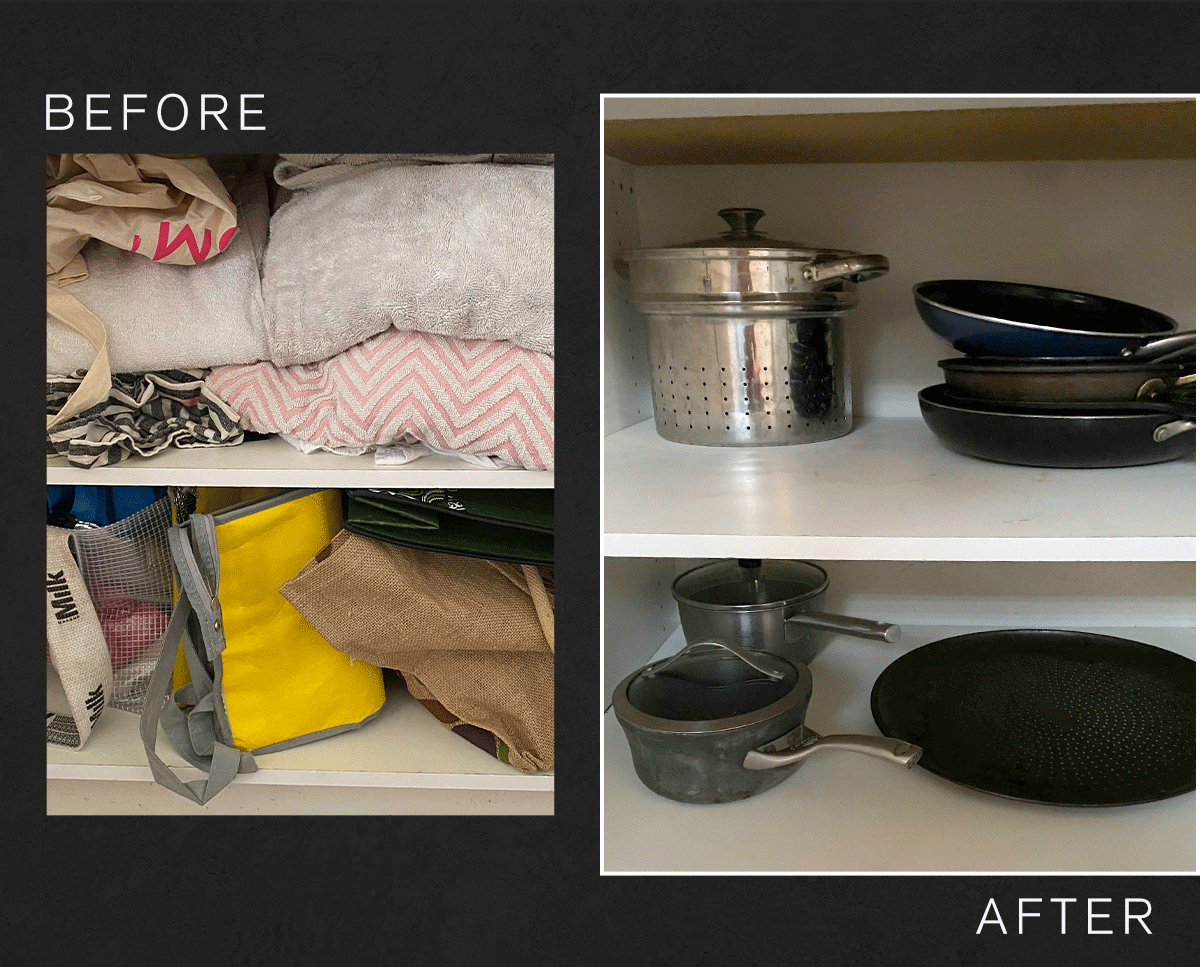
We were using this space as a makeshift linen closet since our home doesn't have any storage designated for that. Julianna suggested I put towels and linens in our guest closet and use this space for cookware. Eventually, we'll upgrade and install pull-out shelving, but for now, this system is already so much more efficient.

Cue the "junk drawer." Turns out, you actually don't need a junk drawer at all—thank you, Julianna, for that revelation. We eliminated most of the items in this drawer and instead used this space for cooking tools since it's located right next to the stove.
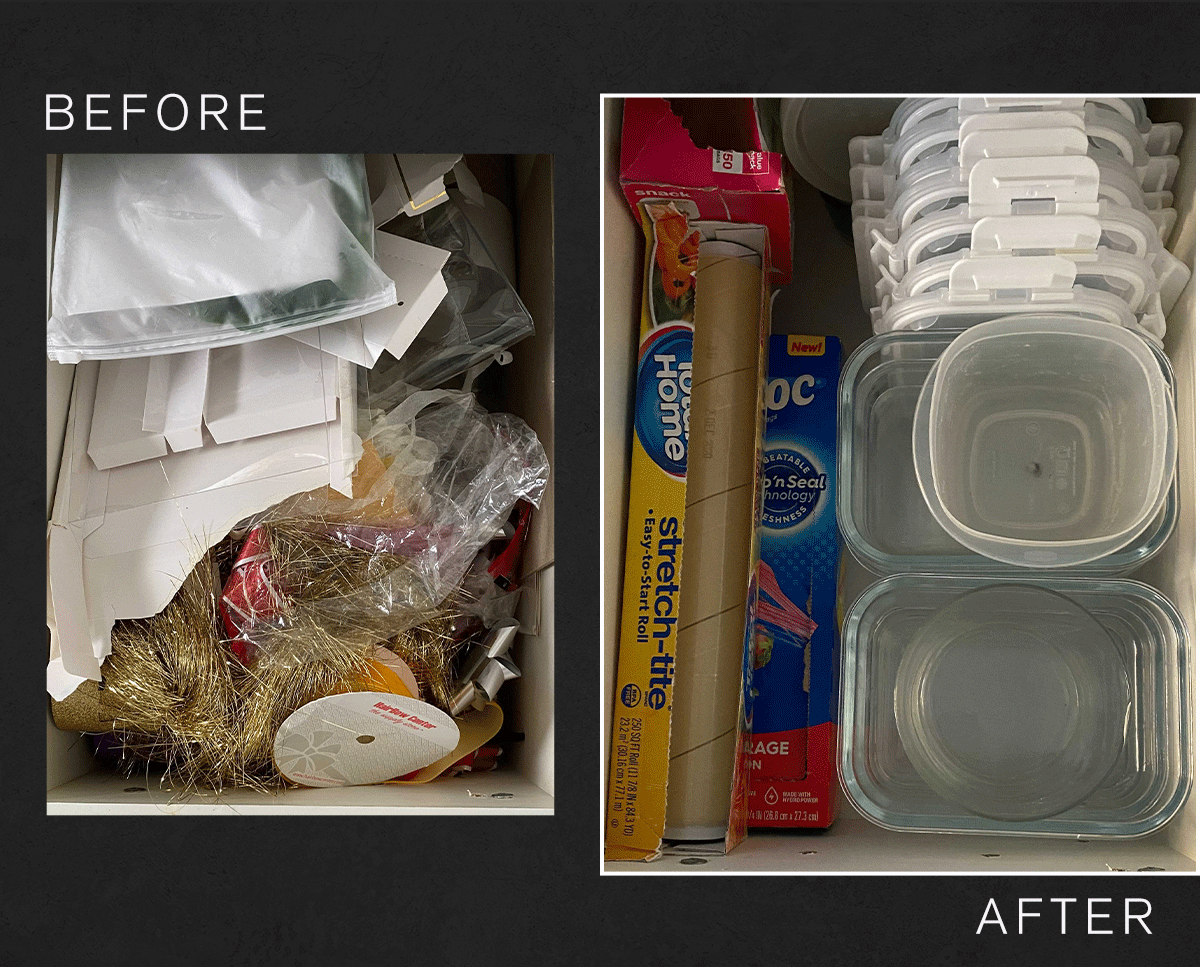
Another useless drawer, this was the "party drawer." This was a space I had been storing party supplies over the years. We were able to clean out and move those supplies to another water hyacinth basket below and instead use this space for glass food-storage containers.
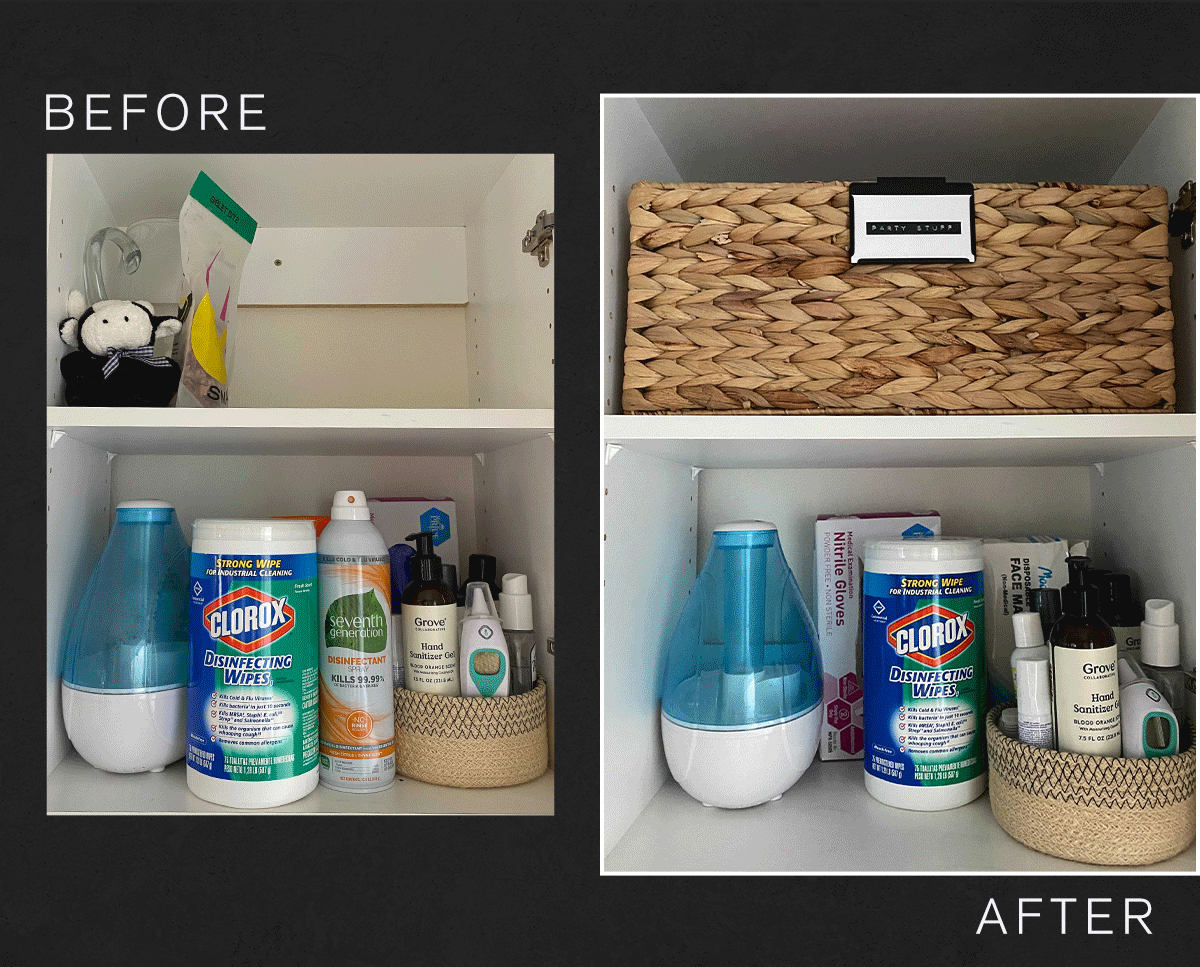
Lastly, we used this small cabinet for the leftover party and gift supplies and reorganized all my easy-to-grab pandemic "PPE" here.
Shop my organizing essentials:
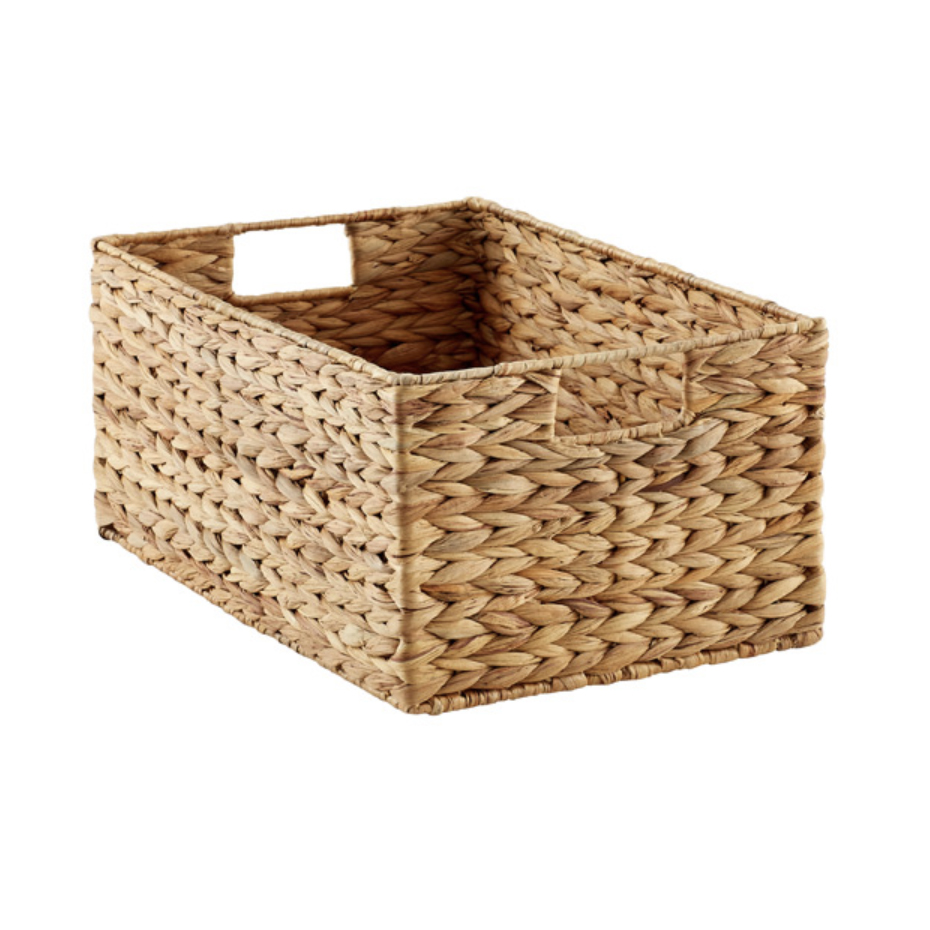
These storage bins look good in any open shelving.
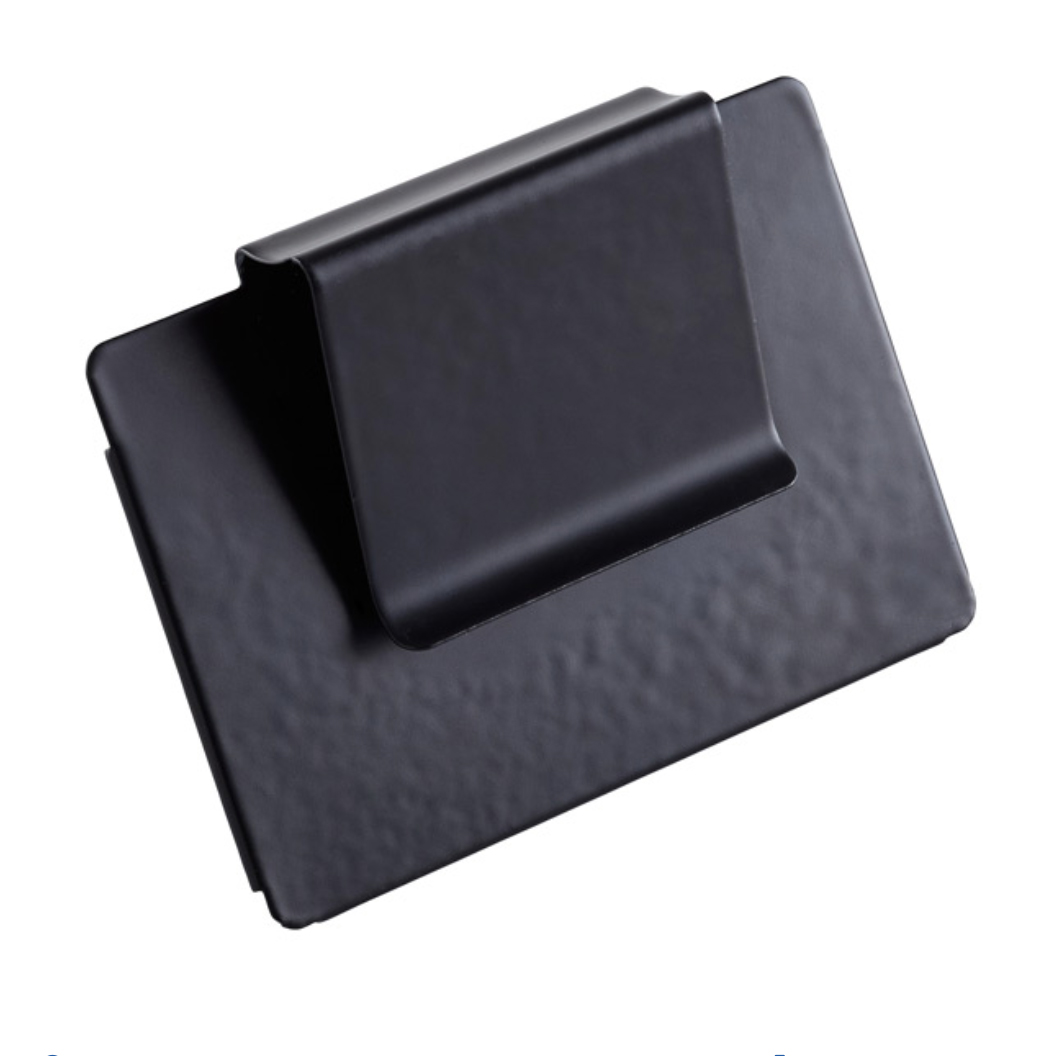
I've had these for a while now, and they make it so much easier to guess what is in each bin.
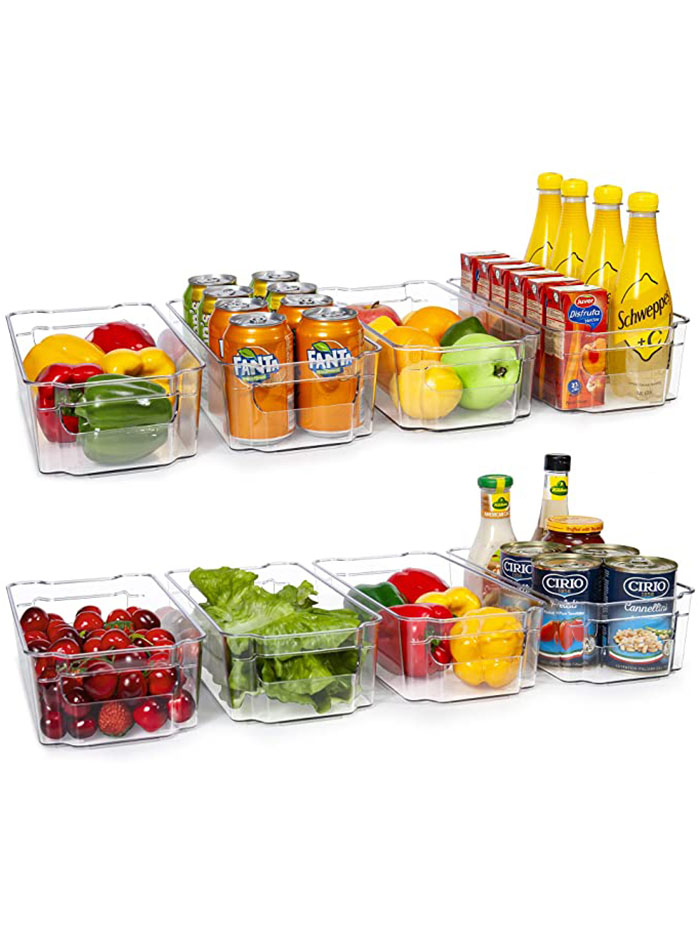
Has anyone else become obsessed with the TikToks using these bins?
This post was published at an earlier date and has since been updated. Up next: I Drank a Gallon of Water Every Day, and I Finally Feel Like Beyoncé
Disclaimer
This article is provided for informational purposes only and is not intended to be used in the place of advice of your physician or other medical professionals. You should always consult with your doctor or healthcare provider first with any health-related questions.
-
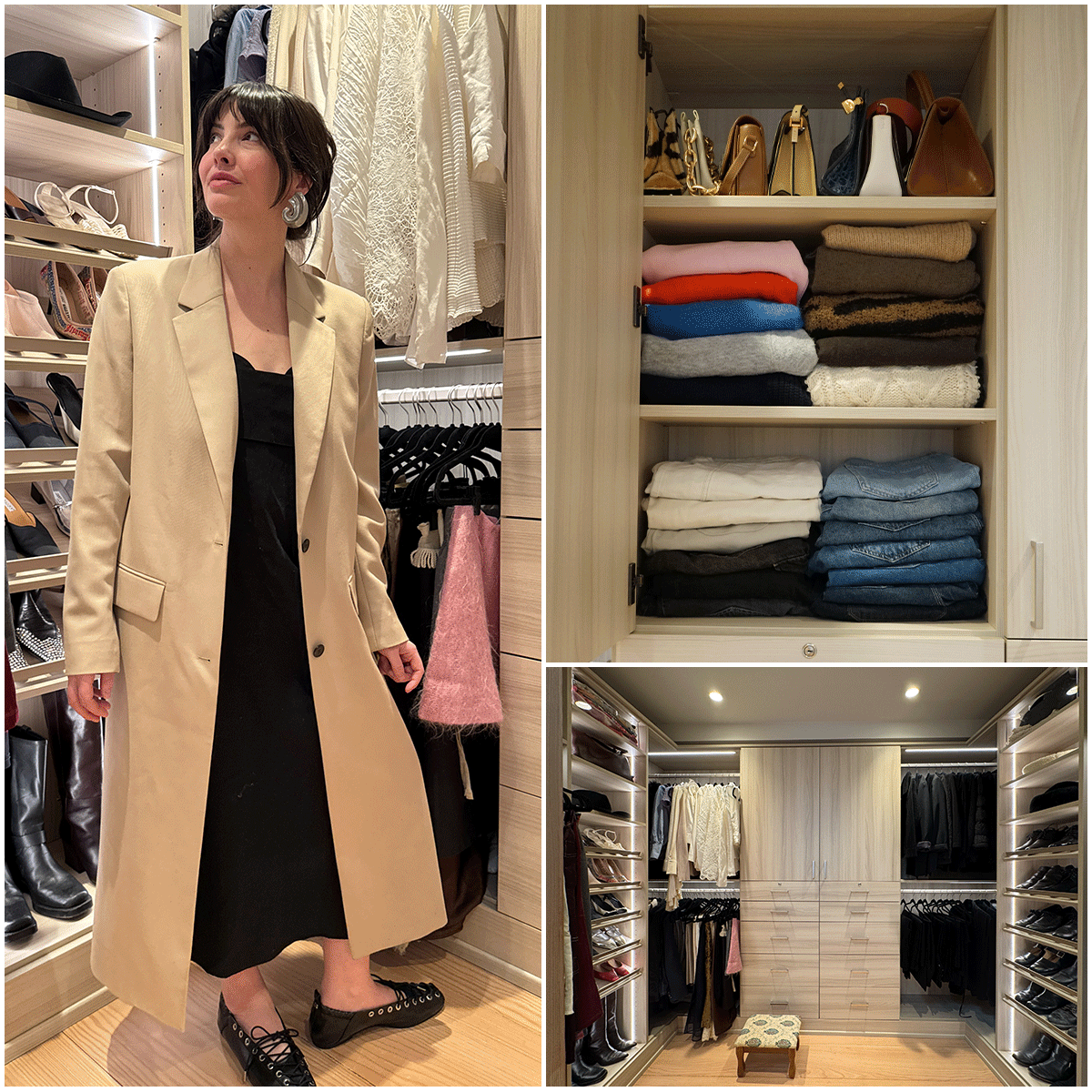 I Spent a Year Designing My Closet—Here Are My Top 8 Organizing Tips
I Spent a Year Designing My Closet—Here Are My Top 8 Organizing TipsA labor of love.
By Kat Collings
-
 What to Wear to a Wedding, According to Every Dress Code
What to Wear to a Wedding, According to Every Dress CodeConsider this your cheat sheet.
By Michaela Bushkin
-
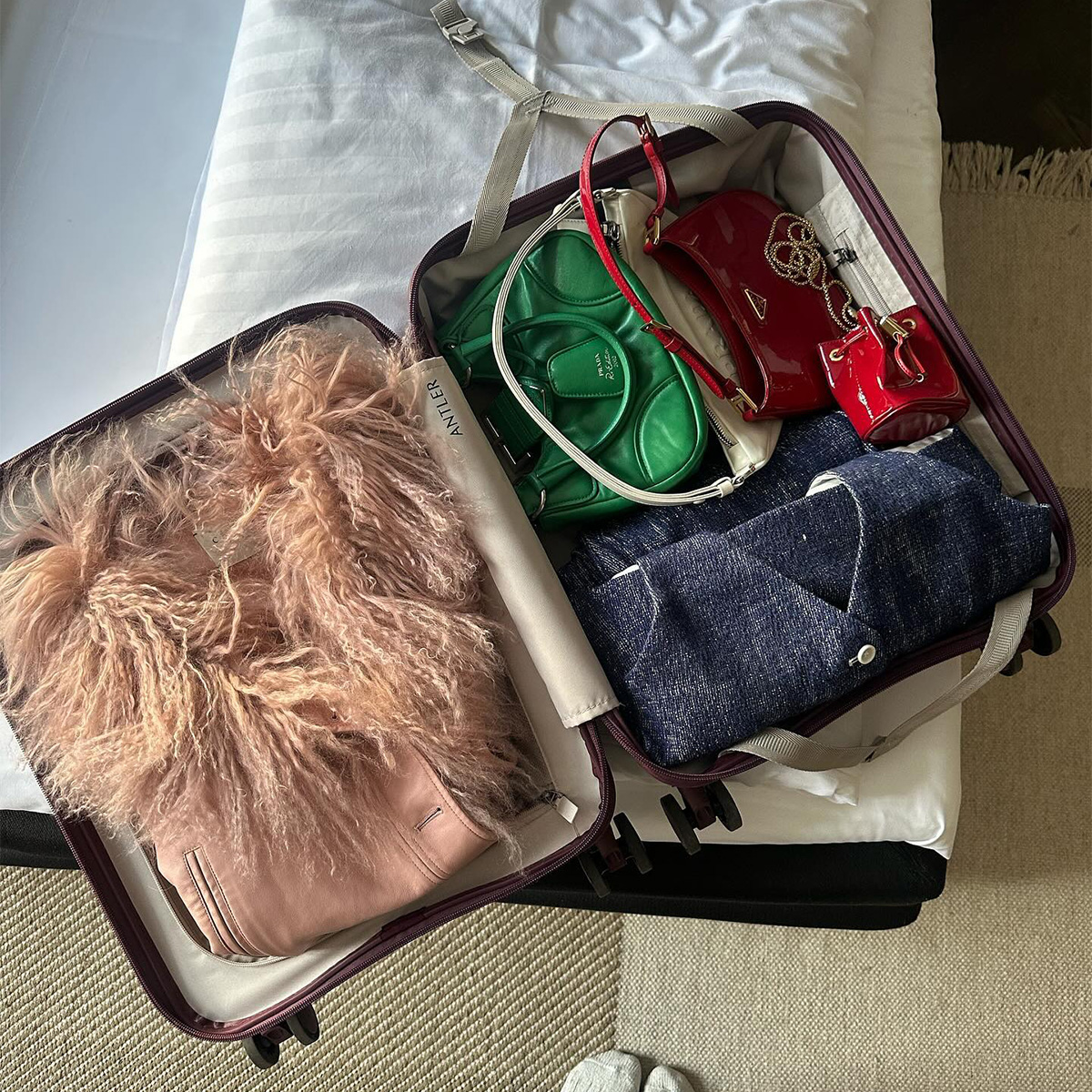 I'm a Fashion Editor Who Loves to Travel—30 Essentials I'm Packing This Year
I'm a Fashion Editor Who Loves to Travel—30 Essentials I'm Packing This YearSeriously good travel items ahead.
By Grace O'Connell Joshua
-
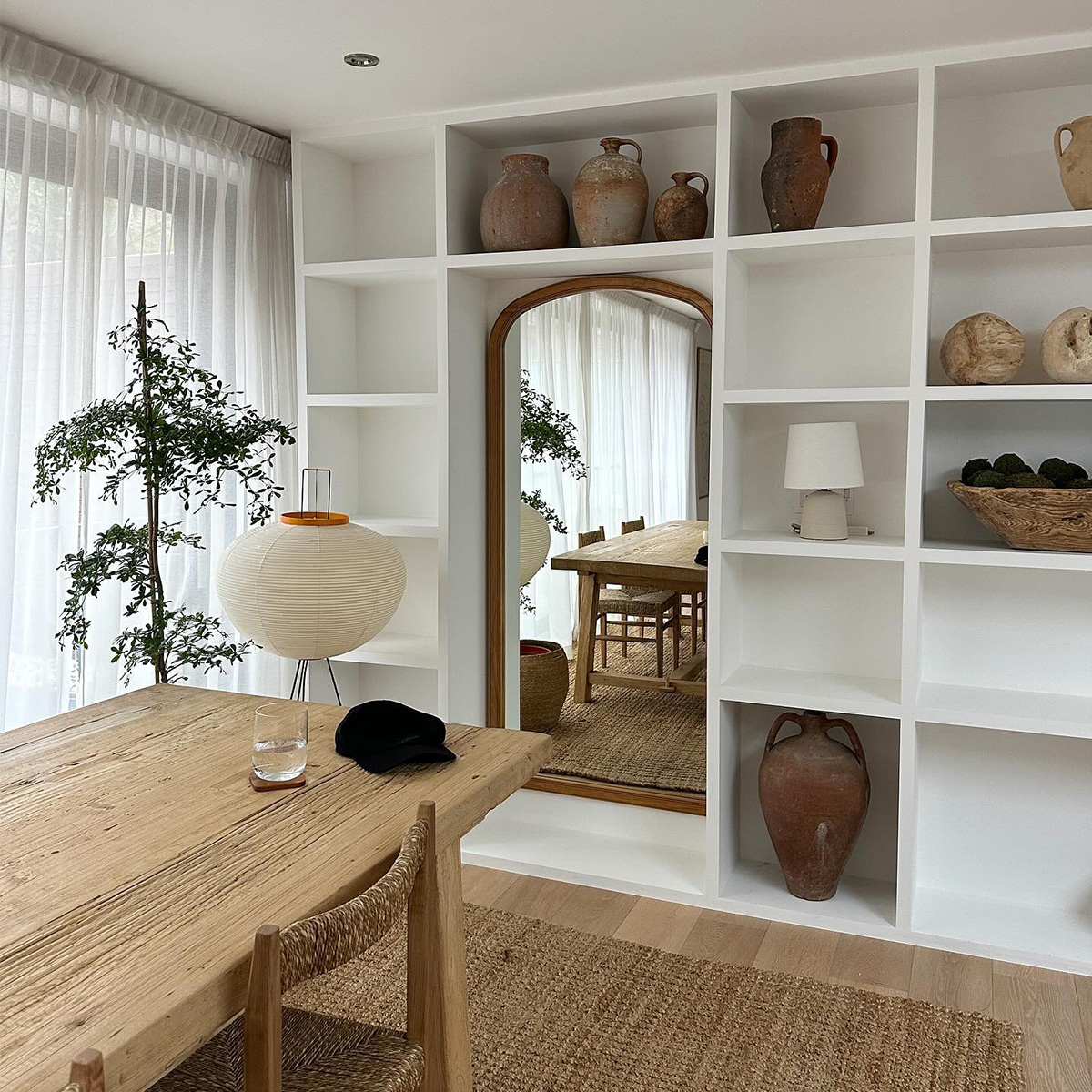 My NYC Apartment Needs Some Serious Organizing, and These 30 Items Saved the Day
My NYC Apartment Needs Some Serious Organizing, and These 30 Items Saved the DayIt's time to do some cleaning.
By Grace O'Connell Joshua
-
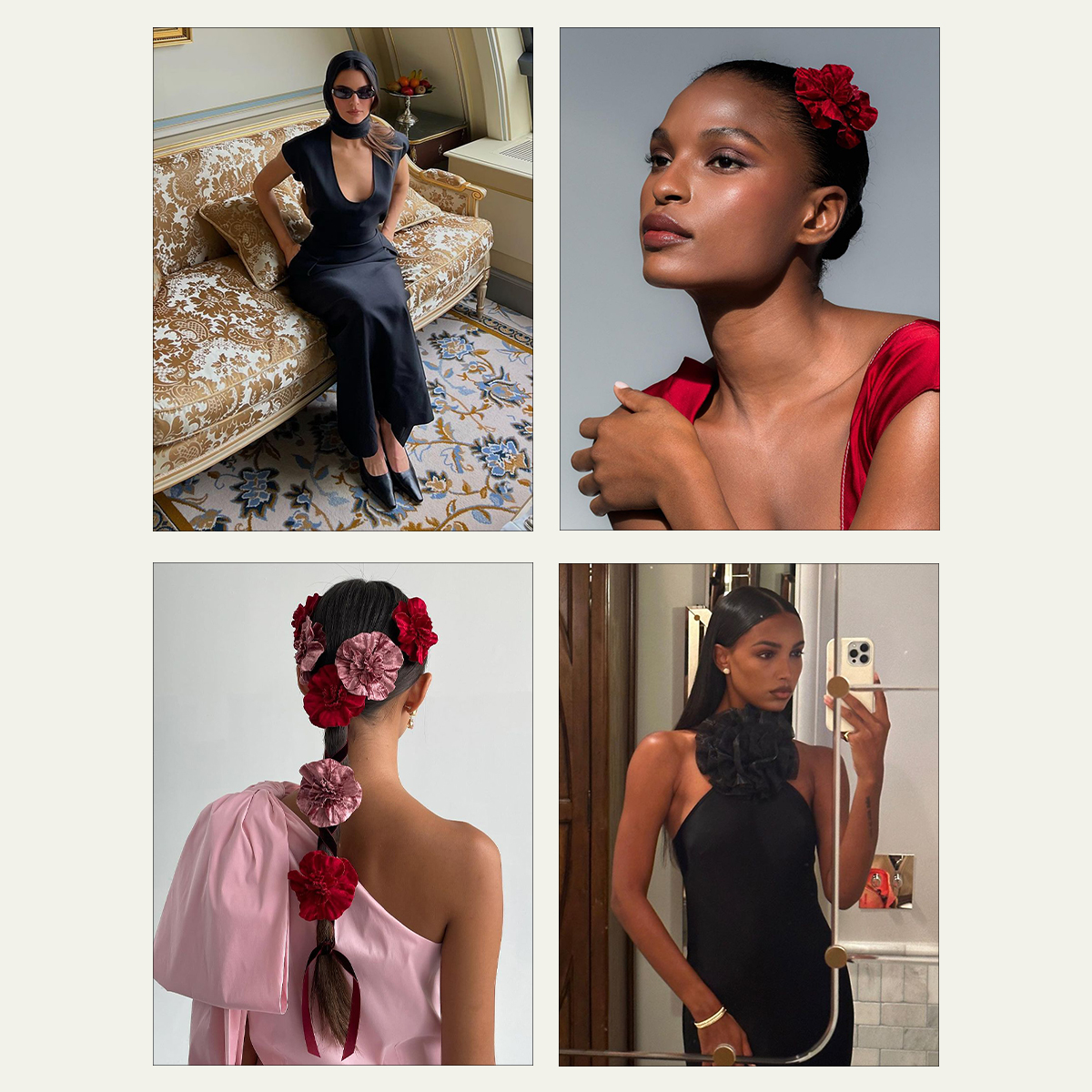 Calling All Fashion Brides: These Are the *It* Bridesmaid Dress Trends to Know
Calling All Fashion Brides: These Are the *It* Bridesmaid Dress Trends to KnowDon't worry. It's nothing like 27 Dresses.
By Yusra Siddiqui
-
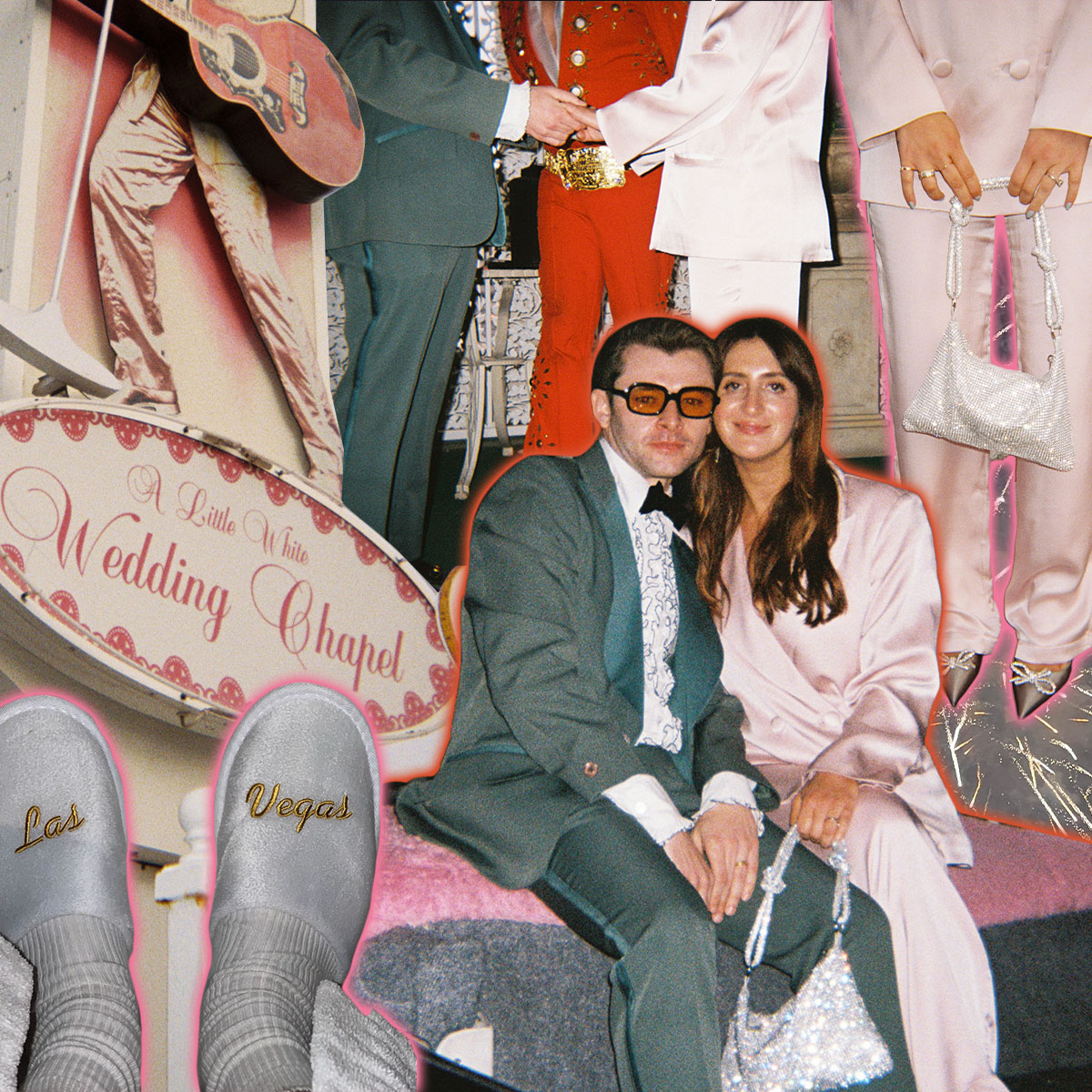 A Pink Suit, a Vintage Limo, and Plenty of Elvis: Inside My Vegas Vow Renewal
A Pink Suit, a Vintage Limo, and Plenty of Elvis: Inside My Vegas Vow RenewalThank you. Thank you very much.
By Caitie Schlisserman
-
 Making My Bedroom Look Peak Fashion Person Only Required These Easy Changes
Making My Bedroom Look Peak Fashion Person Only Required These Easy ChangesAn interior designer spilled some tea, and I took notes.
By Sierra Mayhew
-
 Sydney Sweeney Just Broke My #1 Airport Dressing Rule
Sydney Sweeney Just Broke My #1 Airport Dressing RuleIt's TSA approved, but still.
By Drew Elovitz
